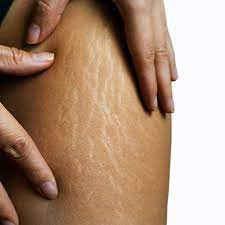views
Stretch Marks Removal Treatments(علاج إزالة علامات التمدد)
Stretch marks after pregnancy are incredibly common, especially on the abdomen, hips, breasts, and thighs. These marks form as the skin stretches rapidly to accommodate the growing baby, causing the collagen and elastin fibers to tear beneath the surface. While they are completely normal and harmless, many new mothers look for solutions to regain smoother, more even-toned skin. The question often asked is: What’s the best way to remove stretch marks after pregnancy? Fortunately, a combination of early care, targeted Stretch Marks Removal in Dubai(علاج إزالة علامات التمدد في دبي), and consistent skincare can greatly reduce their appearance.
Understanding Post-Pregnancy Stretch Marks:
Pregnancy-related stretch marks, also known as striae gravidarum, typically begin as reddish or purplish lines and may fade to white or silver over time. The skin's natural elasticity is challenged during pregnancy, and after delivery, marks may appear more noticeable as the skin contracts. Addressing these early increases the chances of softening their visibility.
Why Treatment Matters:
-
Helps restore skin’s firmness and texture
-
Improves tone and color uniformity
-
Boosts collagen production post-childbirth
-
Enhances confidence and comfort in your skin
-
Prevents stretch marks from becoming more defined over time
Caring for your skin soon after delivery encourages healing while the marks are still fresh and responsive to treatment.

Best Treatment Options After Pregnancy:
There’s no one-size-fits-all solution, but the best way to remove stretch marks after pregnancy often involves a layered approach—using treatments that stimulate collagen, hydrate the skin, and support regeneration.
Effective Methods Include:
-
Topical Retinoids (after breastfeeding)
These vitamin A derivatives boost cell turnover and collagen synthesis. Not recommended during breastfeeding. -
Hyaluronic Acid Serums
Hydrate and plump the skin, improving elasticity and smoothing texture. -
Microneedling Devices
Stimulate natural healing and collagen production by creating tiny skin punctures. -
Natural Oils (Coconut, Almond, or Rosehip)
Moisturize deeply and support long-term elasticity and skin repair. -
Sugar or Coffee Scrubs
Gently exfoliate to remove dead cells and promote new skin growth.
Combining two or more of these methods can increase overall effectiveness, especially when applied consistently over time.
Risks to Be Aware of Postpartum:
While most postpartum treatments are gentle and safe, it’s important to be cautious, especially if you’re breastfeeding or have recently had a cesarean section. Certain active ingredients, like retinoids or strong acids, should be avoided until cleared by a professional.
Common Risks Include:
-
Skin sensitivity or irritation from new products
-
Allergic reactions to natural oils or essential oils
-
Discomfort or redness from microneedling without proper care
-
Risk of infection if exfoliation tools are not sanitized
-
Uneven results if treatments are applied inconsistently
Always perform a patch test before trying any new product and wait for full wound healing if you've had a C-section.
Benefits of Treating Stretch Marks After Childbirth:
Treating Stretch Marks Removal Treatments(علاج إزالة علامات التمدد) after pregnancy offers more than just cosmetic improvement—it helps new mothers feel more comfortable and confident in their post-baby bodies. With continued care, the skin becomes smoother, firmer, and more radiant.
Major Benefits Include:
-
Improved skin tone and color consistency
-
Softer, more hydrated skin
-
Boosted collagen and elasticity restoration
-
Enhanced self-esteem and body confidence
-
Non-invasive and relaxing treatment options
These results build over time, making the journey part of your overall postpartum recovery and wellness.
Frequently Asked Questions:
Can I treat stretch marks while breastfeeding?
Yes, but avoid ingredients like retinoids or harsh chemicals.
How long before I see results?
Visible improvement typically starts within 6 to 12 weeks of consistent care.
Do stretch marks ever go away completely?
They may fade significantly but are unlikely to disappear entirely.
Are natural remedies safe post-pregnancy?
Yes, especially oils like coconut, olive, and almond—safe and nourishing.
Can I combine home and professional treatments?
Yes, combining both often yields faster and better results.
Conclusion:
So, what’s the best way to remove stretch marks after pregnancy? The most effective approach blends hydration, collagen-stimulating treatments, and gentle exfoliation. Whether you choose topical serums, natural oils, microneedling tools, or a combination, consistency is key. By nurturing your skin daily and choosing safe, effective methods, you can gradually restore its strength and smoothness. With time, care, and patience, those post-pregnancy stretch marks can fade into a quiet reminder of your body’s strength—without stealing the spotlight from your renewed confidence.



Comments
0 comment